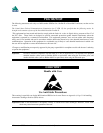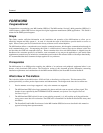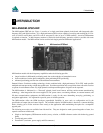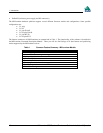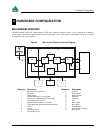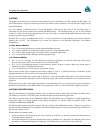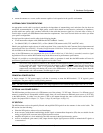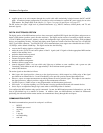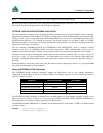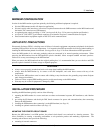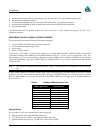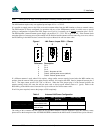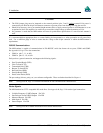
2 Hardware Configuration
MiLLennium GPSCard and Enclosures Guide to Installation & Operation 15
•
mount the antenna on a secure, stable structure capable of safe operation in the specific environment
ANTENNA CABLE CONSIDERATIONS
An appropriate coaxial cable is one that is matched to the impedance of antenna being used, and whose line loss does not
exceed the recommendation of 13 dB. High quality coaxial cable should be used because a mismatch in impedance,
possible with lower quality cable, produces reflections in the cable that increases signal loss. NovAtel offers a variety of
coaxial cables to meet your GPSAntenna interconnection requirements. Your local NovAtel dealer can advise you about
your specific configuration.
NovAtel provides optional coaxial cables in the following lengths:
•
22 cm interconnect adapter cable (SMB female/TNC bulkhead - female)
•
5 m (Model C005), 15 m (Model C015), or 30 m (Model C030) antenna cable (TNC male/TNC male)
Should your application require the use of cable longer than 30 m, contact the NovAtel Customer Service department and
request Application Note APN-003, “Extended-Length Antenna Cable Runs” before you proceed. Application notes may
also be found on the NovAtel website at http://www.novatel.ca.
Any of the GPSAntennas can compensate for up to 13 dB of cable loss; if this limit is exceeded, excessive signal
degradation will occur and the MiLLennium may not be able to meet its performance specifications.
Though it is possible to use other high-quality antenna cables, no guarantee is made that the MiLLennium will meet its
performance specifications if non-NovAtel-supplied coaxial cable is used.
Note: The coaxial cable should be connected to the antenna and MiLLennium before system power is turned on. If
for any reason the cable is disconnected from the antenna or MiLLennium, you must turn off power before
reconnecting the cable. This is to prevent the MiLLennium’s antenna current-limiting circuit from
unnecessarily activating and shutting off power to the GPSAntenna. If this occurs, remove power from the
MiLLennium, wait a few moments, and then apply it again.
PRINCIPAL POWER SUPPLY
A single external 5 V DC power supply is all that is necessary to meet the MiLLennium’s 7.5 W (typical) power
consumption. The power input is reverse-polarity protected.
Note: The MiLLennium will suspend operation if the voltage supplied to it falls outside the input range of 4.875 to 5.25 V DC.
OPTIONAL LNA POWER SUPPLY
The MiLLennium provides power to its GPSAntenna out of the primary 5 V DC input. However, if a different type of
antenna is required that is incompatible with this supply, then you could connect an additional power source (
≤
30 V DC)
to the MiLLennium. In either case, the power is fed to the antenna through the same coaxial cable used for the RF
signals. See jumper P301 in Chapter 3, I, Figure 3 (Page 18) and Figure 4 (Page 21).
RF SECTION
The MiLLennium receives the partially filtered and amplified GPS signals from the antenna via the coaxial cable. The
RF section does the following:
• filters the RF signals to reduce noise and interference
• down-converts (with further band-limiting) the RF signals to intermediate frequencies (IFs) that are suitable for the
analog-to-digital (A/D) converter in the digital electronics section
• amplifies the signals to a level suitable for the A/D converter in the digital electronics section
• receives an automatic gain control (AGC) input from the digital signal processor (DSP) to maintain the IF signals at
a constant level



